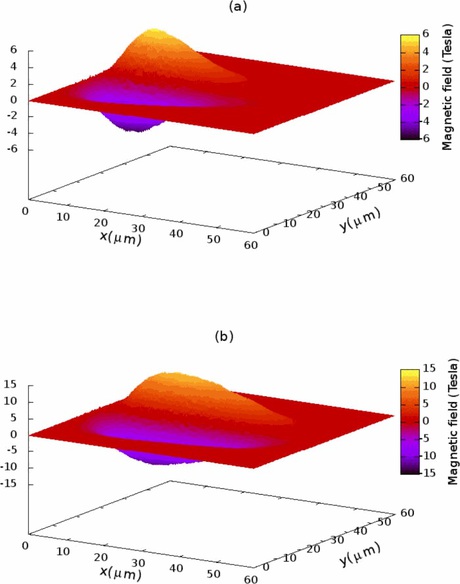How to improve benchtop particle accelerators

Researchers from India and South Korea have proposed a way to improve the beam quality of laser wakefield accelerators, also known as benchtop accelerators. Improving the beam quality could enable these devices to bring high-energy physics experiments to universities and labs and to produce charged particles for medical treatments.
The world’s most powerful particle accelerator, the Large Hadron Collider (LHC), uses electric fields or radio waves to accelerate bunches of charged particles over 27 km of track. Laser wakefield accelerators, on the other hand, operate on a very different principle that requires only a fraction of the distance of conventional accelerators like the LHC.
The laser in a laser wakefield accelerator sends a pulse through a diffuse plasma. Plasma is a state of matter that contains positive ions and free electrons. The laser pulse excites waves in the plasma. The waves, in turn, create an electric field, also known as a laser wakefield, that traps electrons and accelerates them to energy levels up to the order of gigaelectronvolts. In comparison, the LHC can accelerate particles to energy levels of teraelectronvolts (1000 gigaelectronvolts).
The research team identified a technique they think could increase the number of electrons trapped in the wake of the laser pulse and therefore improve the beam quality of laser wakefield accelerators. Writing in the Journal of Applied Physics, the study authors claim their finding could improve technology for future accelerators.
In addition to an electric field, plasma-laser interactions can generate a magnetic field. When a laser pulse propagates through plasma, the electric field of the laser pulse pushes the electrons around. If there is a net electron current within the pulse, it generates a magnetic field. The colleagues analysed laser-plasma dynamics using 2D computer simulations and found that if the plasma density varies and the laser pulse compresses at the front so that it is asymmetric, both factors produce a larger magnetic field.
“The self-generated magnetic field bends the trajectory of the outgoing electrons towards the plasma wake, consequently the total number of trapped charge particles in the plasma wake increases — and hence, the total charge in the accelerated bunch in the laser wakefield acceleration increases,” said study co-author Devki Nandan Gupta, a physicist at the University of Delhi.
Plasma-based accelerators require approximately 1000 times less distance than standard particle accelerators to achieve a comparable particle energy level. With the technology still in the developmental stage, Gupta and his colleagues hope their work could facilitate the next generation of plasma accelerators.
Microplastics found to alter the human gut microbiome
Microplastic-treated cultures showed a consistent and significant increase in acidity (lower pH...
Sustainable, self-repairing, antimicrobial polymers developed
From medicine to electronics and optics, new materials developed by scientists at Kaunas...
A better way to create conductive polymers
New research disproves the longstanding belief that to create conductive polymers, substances...





